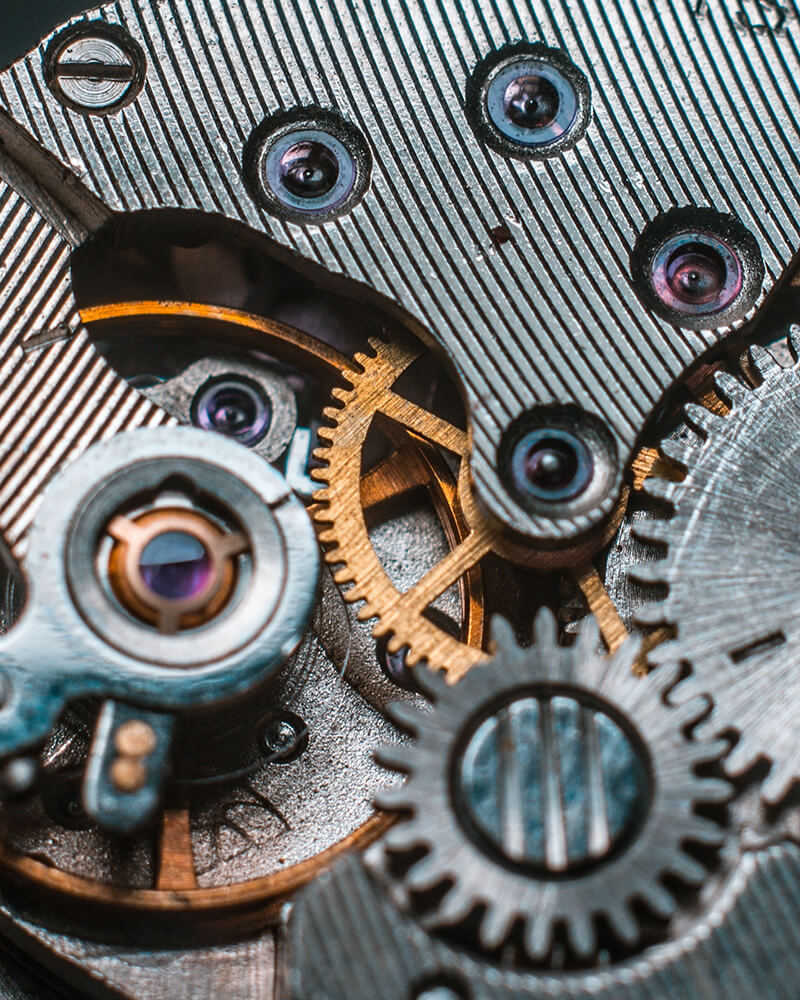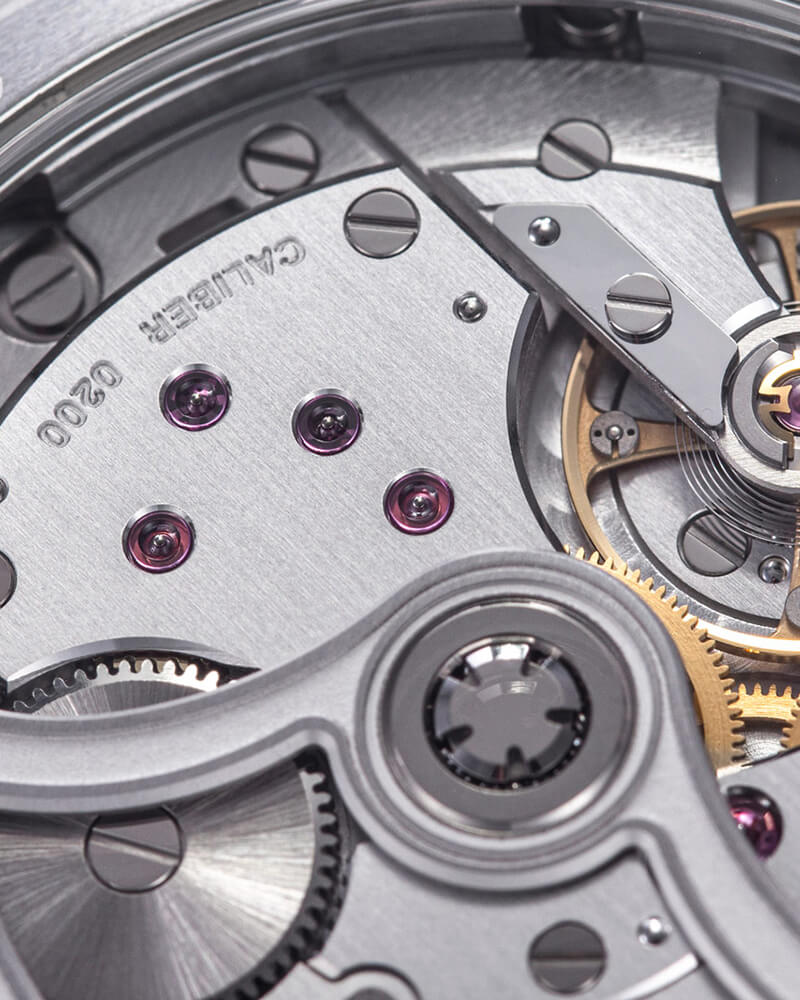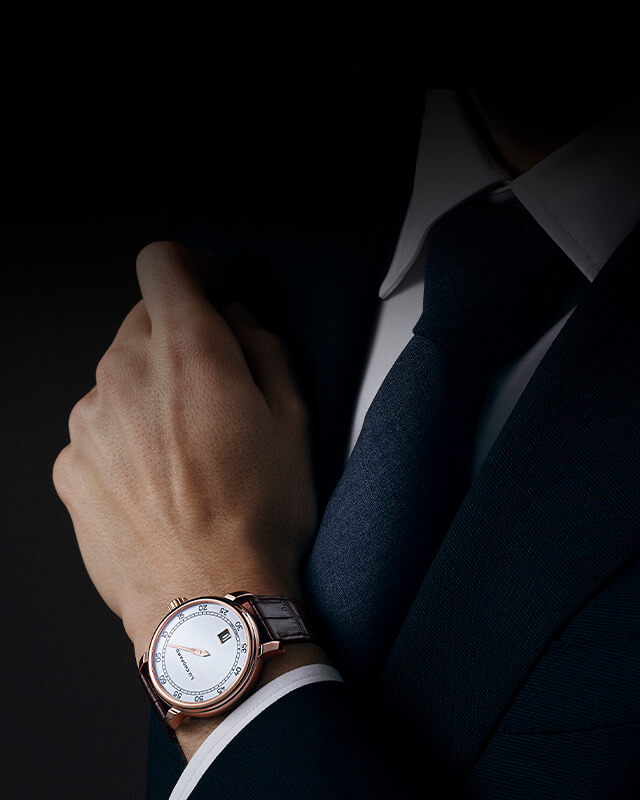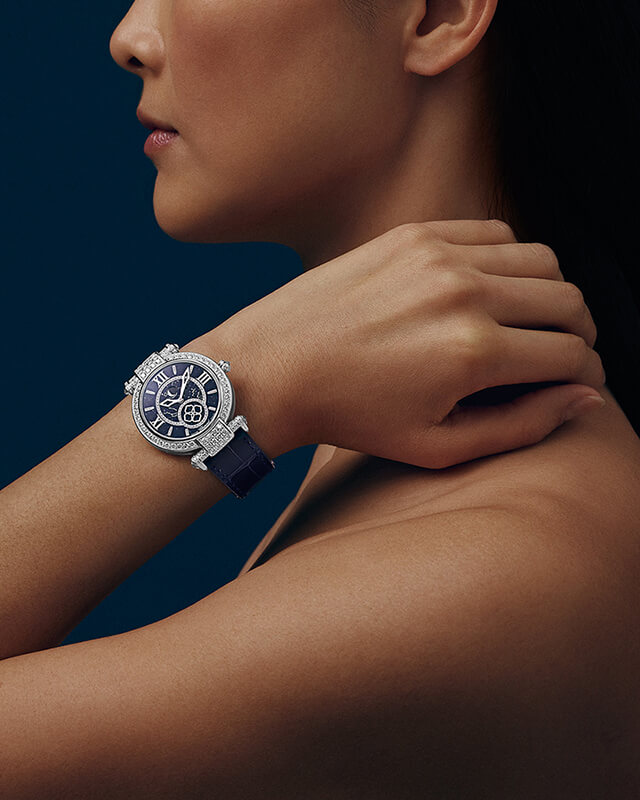
Mechanical Movements
Most commonly used in luxury or collector timepieces, a mechanical movement is shockingly much less accurate than a quartz (i.e., battery powered) movement. Often losing a number of seconds throughout the day, they have to be manually wound on average at least once daily. In addition to losing time, they can be very sensitive to the environment. Factors such as position, temperature, elevation, and magnetism can cause failure in the watch and despite being costly to produce, they also require a great deal of dedicated maintenance and adjustments.
Regardless of the issues that a mechanical movement can cause, these watches are truly a work of craftsmanship and therefore are highly regarded by most watch enthusiasts.
Automatic Movements
Similar to that of a mechanical watch, automatic movements run almost identical but with one very important exception; unlike its predecessor, it does not require manual winding to operate.
By employing an off-center weighted rotor that spins as you move your wrist, which in turn, operates a ratcheted mechanism that winds the watch automatically. To prevent the watch from over-winding (which would cause the mainspring to break), the automatic watch has a clutch that upon being fully wound, drops in front of the mechanism to prevent it from engaging the mainspring. In addition to the classic automatic watch, there are also automatic quartz watches which utilize kinetic energy and in some cases, solar energy to operate.

The History of Watchmaking
Sundials get credit as the first devices used to measure time more than 10,000 years ago, while ancient Egyptians used the positioning of the stars to measure time at night. Timepieces were subsequently devised using various materials, such as oil, candles and water. Water played a huge role in time measurement with Japan’s water clock circa 671 and the China’s water-powered astronomical clock tower in 1090.
Mechanical clocks entered the scene around 1300, with weight-driven timepieces eventually developing into clocks relying on mainsprings for power. Galileo Galilei helped further advance the development of timepieces with his studies on pendulums in the late 1500s, paving the way for Christiaan Huygens’ creation of the pendulum clock by 1656.
Dutchman Huygens kept at it for decades, eventually producing a portable clock that relied on a spring and balance-wheel regulator. This opened the door for the development of mechanical clocks, which debuted throughout London and Paris in the 1700s.
Pocket watches and clock-watches worn around the neck were introduced in the early 1500s. Design and time-keeping abilities were poor; the devices were more for status than function. Minute hands were added in 1680, followed by self-winding capabilities in 1780.
Although wristwatches were first commercialized in 1880 when 2,000 were ordered by Kaiser Wilhelm I for naval officers in Germany, men didn’t fully embrace the concept until a couple of decades later.
Men’s wristwatches came into vogue with help from Brazilian aviator Alberto Santos Dumont. The pilot asked his pal Louis Cartier to create a wristwatch he could wear while flying, one that let him time his flight while keeping both hands on the aircraft’s controls. This led to the first men’s wristwatch prototype known as the Santos wristwatch.
Anatomy of A Watch


Men’s Watches Come into Fashion
How the watch got its name
As the centuries passed, watches began to appear on the cobblestone streets beginning sometime in the early seventeenth century. Prior to the 1920’s, almost all watches were mechanical pocket watches and often referred to as railroad or conductor watches since they were most commonly used by the railroads.
However, when World War I broke out, American soldiers determined that the idea of having to reach into a pocket to check the time while buried deep in the trenches of war was a ridiculous notion, and thus the trench watch, now the commonly known ‘wrist watch’, was born into existence. Originally developed by the Waltham Watch Company, it gave soldiers the unique ability to check the time while still peering down the sights of their rifles as the battle raged on.

